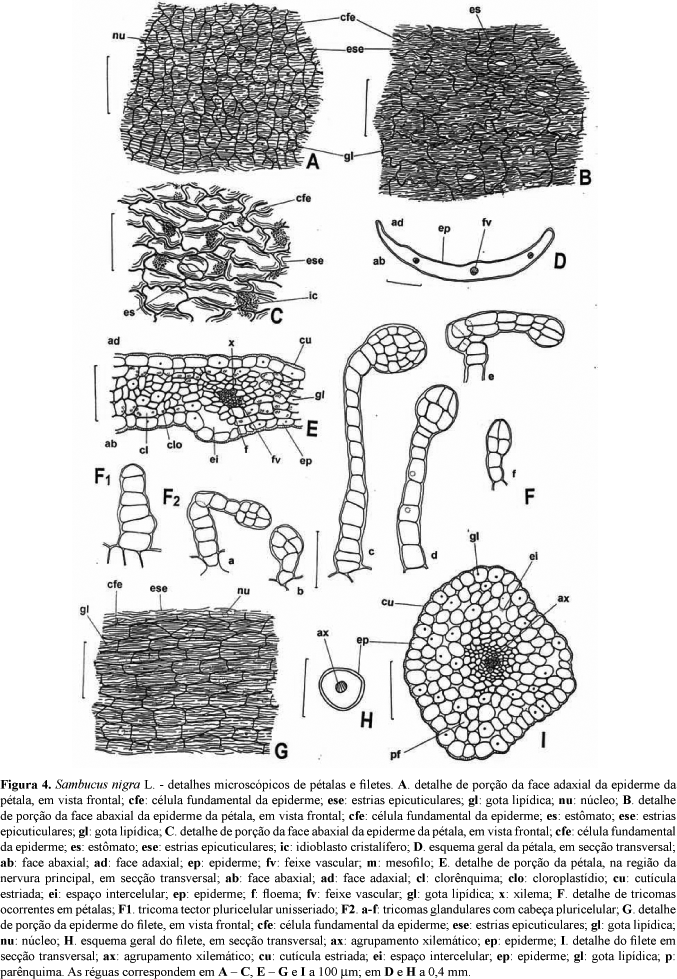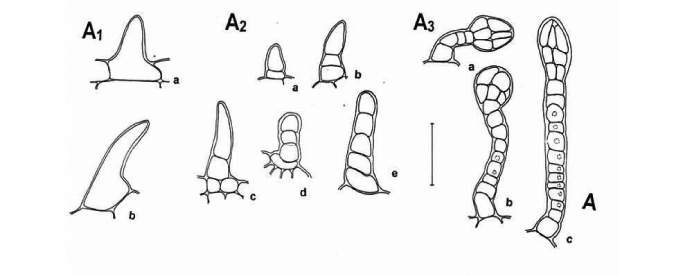The Elder tree (Sambucus nigra L., Caprifoliaceae) is a medicinal plant described in international pharmacopoeias, not yet mentioned in the Brazilian Pharmacopoeia. The flowers of this European species are commercialized in natura by the pharmacopeial name of Sambuci flos, with diuretic, antipyretic, anti-inflammatory and mild laxative purposes, and to treat respiratory diseases, through infusions or decoctions forms. Aiming at elaborating an updated pharmacopeial monograph, the macro and microscopic botanic characters were established, with the classic methodology used in plant morpho-anatomy. The macroscopic characters are: monoclin and equal flowers; corolla with three to five millimeters of diameter; petals with three to four parallel veins; equal stamens; ovary often with three locules. The main microscopic characters are: thickened and striated cuticle; anomocytic stomatas; bracts, sepals and petals with sandy crystals of calcium oxalate idioblasts; hypostomatic bracts; amphystomatic sepals; amphi-hypostomatic petals; strongly wavy epidermal cells in the lower surface of sepals and petals; filaments epidermal cells with narrow and straight walls; glandular and non-glandular trichomes of different types in all pieces; homogeneous mesophyll in bracts, sepals and petals; vascular system represented by both collateral bundles and xylematic elements; volatile and non-volatile oil globules in all structures.
Sambucus nigra; Caprifoliaceae; pharmacobotany; morpho-anatomy










